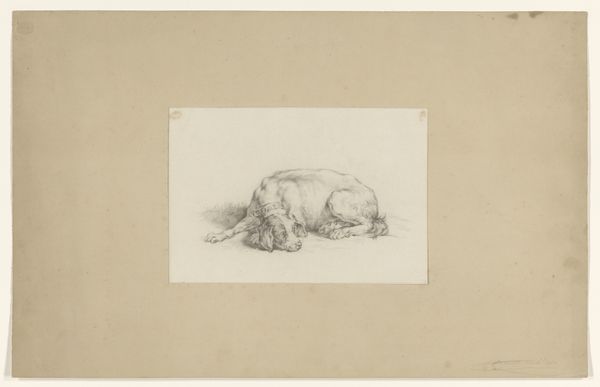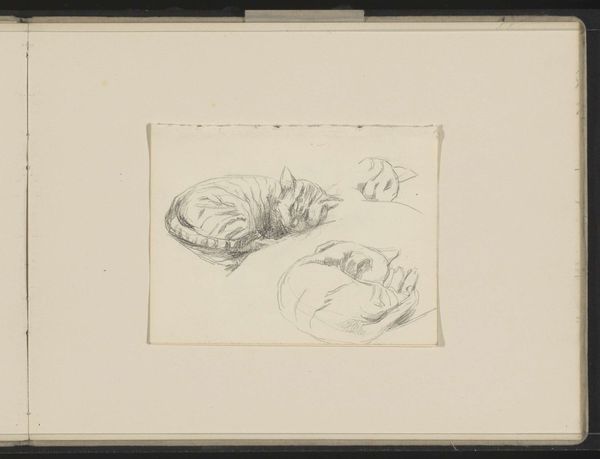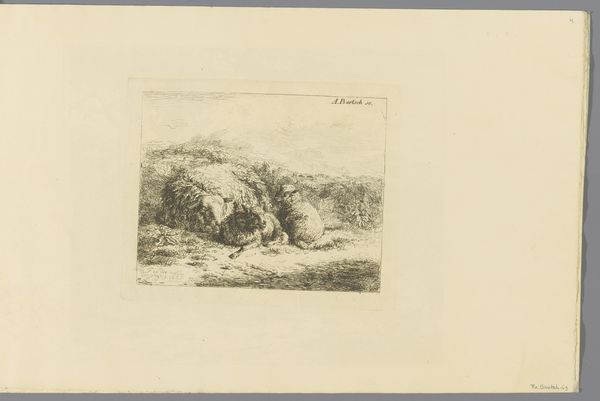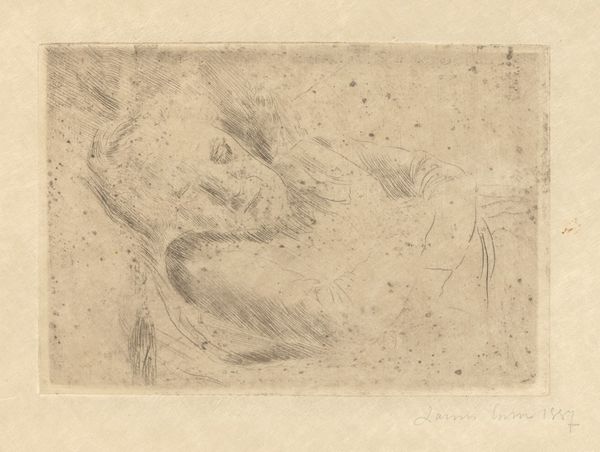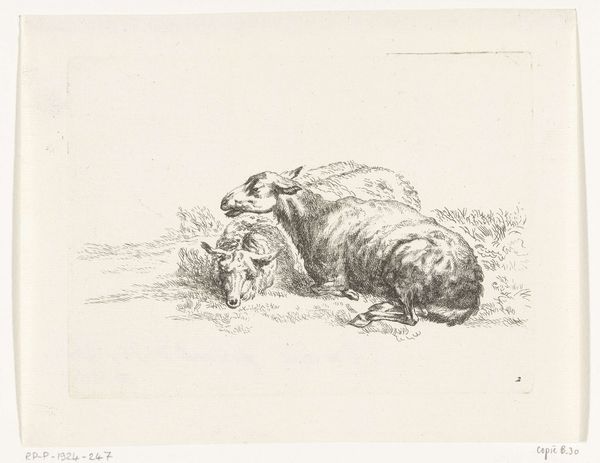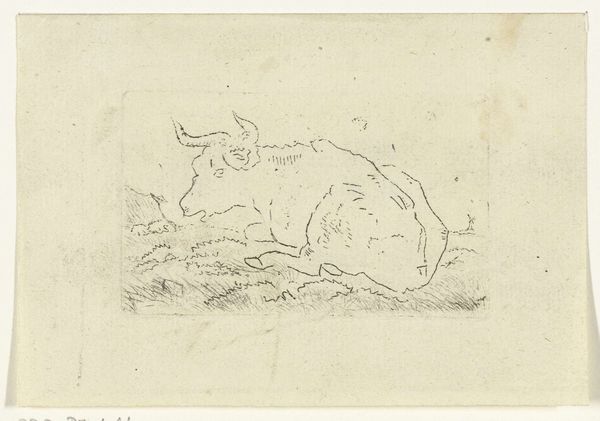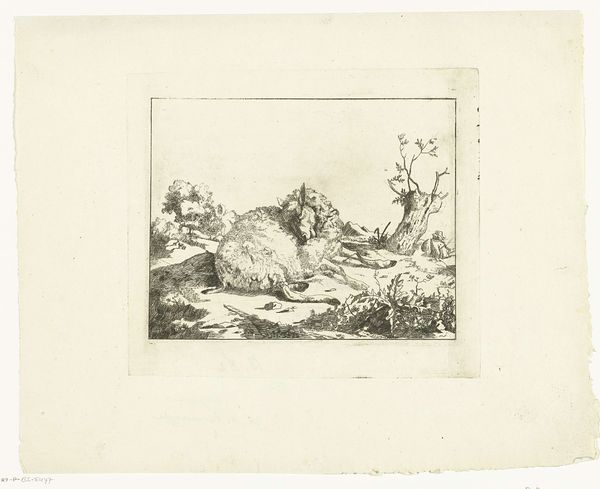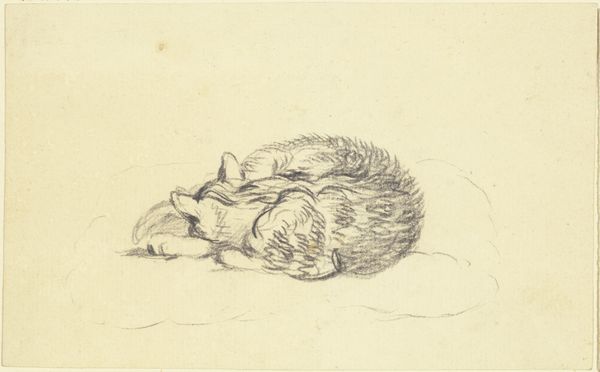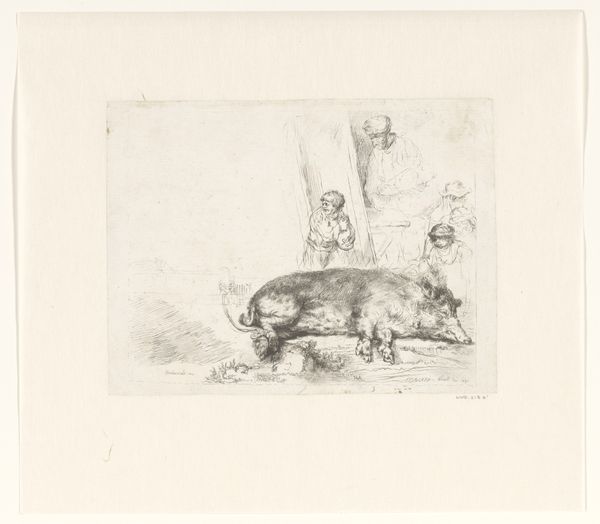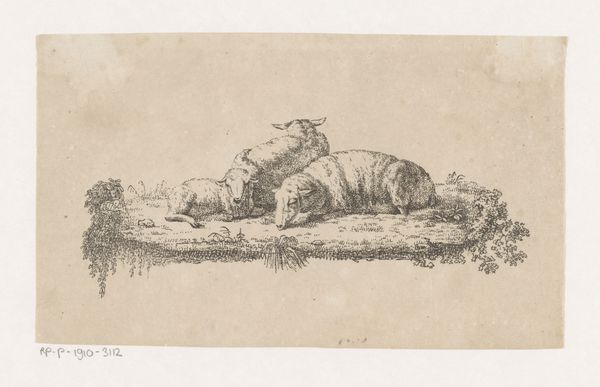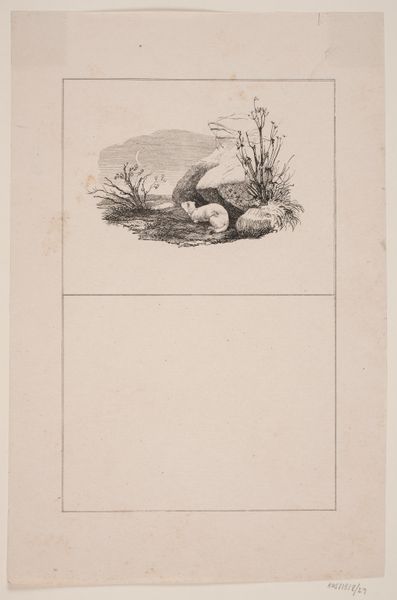
drawing, print, etching, pencil
#
drawing
#
animal
# print
#
etching
#
pencil sketch
#
landscape
#
pencil
#
genre-painting
#
realism
Dimensions: height 118 mm, width 170 mm
Copyright: Rijks Museum: Open Domain
Editor: This is "Slapende schapen," or "Sleeping Sheep," by G. van Citters, dating from around 1750 to 1800. It’s an etching, a drawing, a print--rendered in pencil. It’s incredibly delicate, almost ephemeral in its rendering. What do you see in this piece beyond its surface tranquility? Curator: It’s tempting to simply see pastoral tranquility, but let's resist that initial reading. Consider the socio-economic context of 18th-century Netherlands. Depictions of rural life, like this one, were often consumed by an urban elite, even as the very people and animals represented in such artworks were being affected by things like land enclosures and the rise of capitalist agriculture. What does it mean to idealize rural simplicity when that simplicity is increasingly under threat? Editor: So you're suggesting this image may participate in a form of... nostalgic idealization? Perhaps even obscuring some of the realities faced by rural communities at that time? Curator: Precisely. The “Sleeping Sheep” becomes more than just an image of livestock. It speaks to larger cultural anxieties surrounding modernization and the changing relationship between urban and rural life. Think about the role of genre painting at that time. Were these simply depictions or subtle commentaries on power and progress? Editor: I hadn't considered the layers of social commentary. I was so focused on the image's serene appearance. Curator: It's a potent reminder that art is rarely neutral; it actively participates in broader social dialogues, reinforcing or contesting existing power structures. Even something as seemingly innocuous as sleeping sheep can carry significant cultural weight. Editor: This has definitely shifted my understanding. I see the artwork as less of a simple depiction of sheep and more as a statement about societal changes. Thanks for pointing that out! Curator: Indeed. Remember to always consider the social fabric of a piece. This approach may encourage more empathetic, holistic interpretations.
Comments
No comments
Be the first to comment and join the conversation on the ultimate creative platform.


